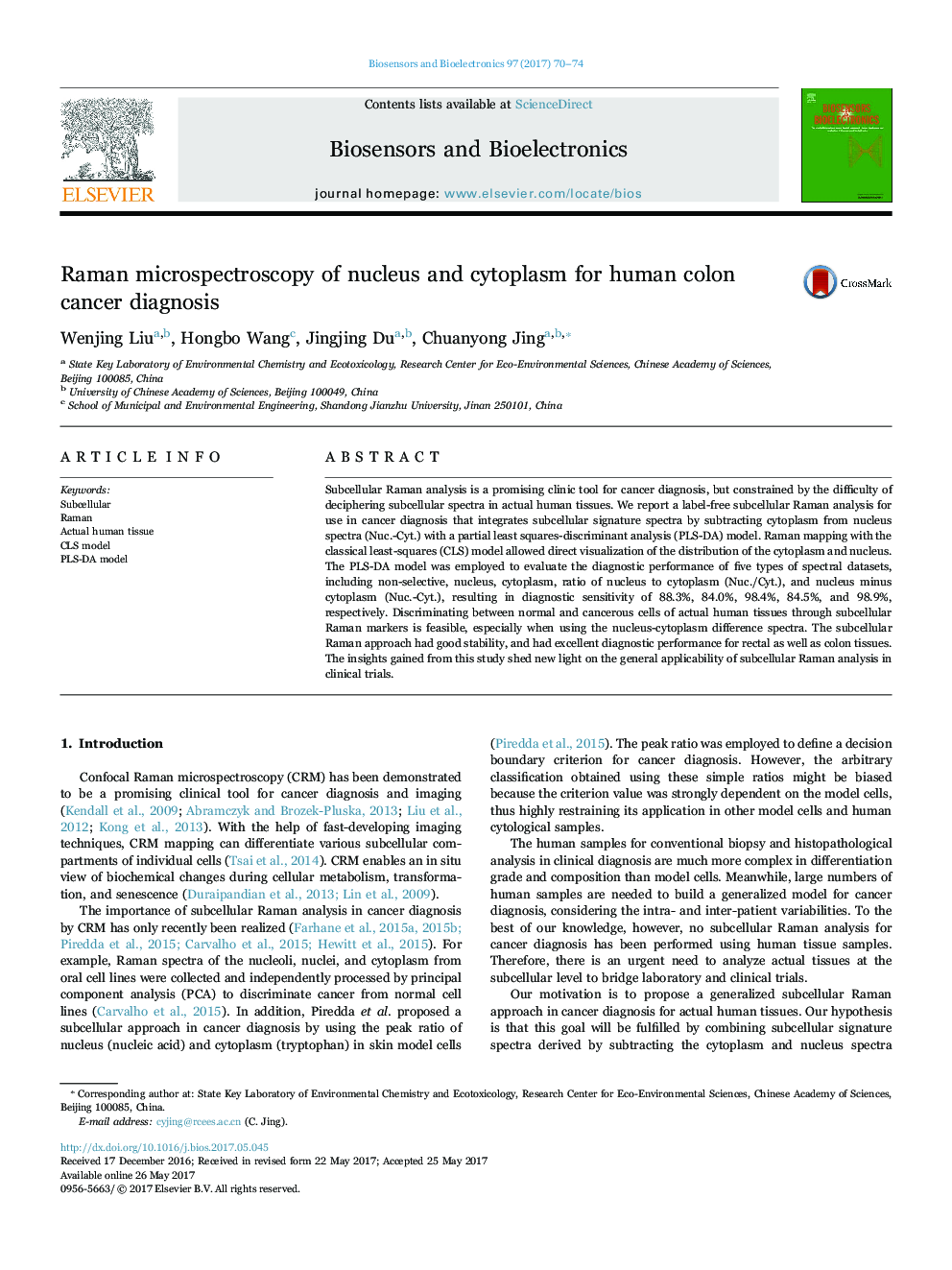| Article ID | Journal | Published Year | Pages | File Type |
|---|---|---|---|---|
| 5031005 | Biosensors and Bioelectronics | 2017 | 5 Pages |
Abstract
Subcellular Raman analysis is a promising clinic tool for cancer diagnosis, but constrained by the difficulty of deciphering subcellular spectra in actual human tissues. We report a label-free subcellular Raman analysis for use in cancer diagnosis that integrates subcellular signature spectra by subtracting cytoplasm from nucleus spectra (Nuc.-Cyt.) with a partial least squares-discriminant analysis (PLS-DA) model. Raman mapping with the classical least-squares (CLS) model allowed direct visualization of the distribution of the cytoplasm and nucleus. The PLS-DA model was employed to evaluate the diagnostic performance of five types of spectral datasets, including non-selective, nucleus, cytoplasm, ratio of nucleus to cytoplasm (Nuc./Cyt.), and nucleus minus cytoplasm (Nuc.-Cyt.), resulting in diagnostic sensitivity of 88.3%, 84.0%, 98.4%, 84.5%, and 98.9%, respectively. Discriminating between normal and cancerous cells of actual human tissues through subcellular Raman markers is feasible, especially when using the nucleus-cytoplasm difference spectra. The subcellular Raman approach had good stability, and had excellent diagnostic performance for rectal as well as colon tissues. The insights gained from this study shed new light on the general applicability of subcellular Raman analysis in clinical trials.
Keywords
Related Topics
Physical Sciences and Engineering
Chemistry
Analytical Chemistry
Authors
Wenjing Liu, Hongbo Wang, Jingjing Du, Chuanyong Jing,
